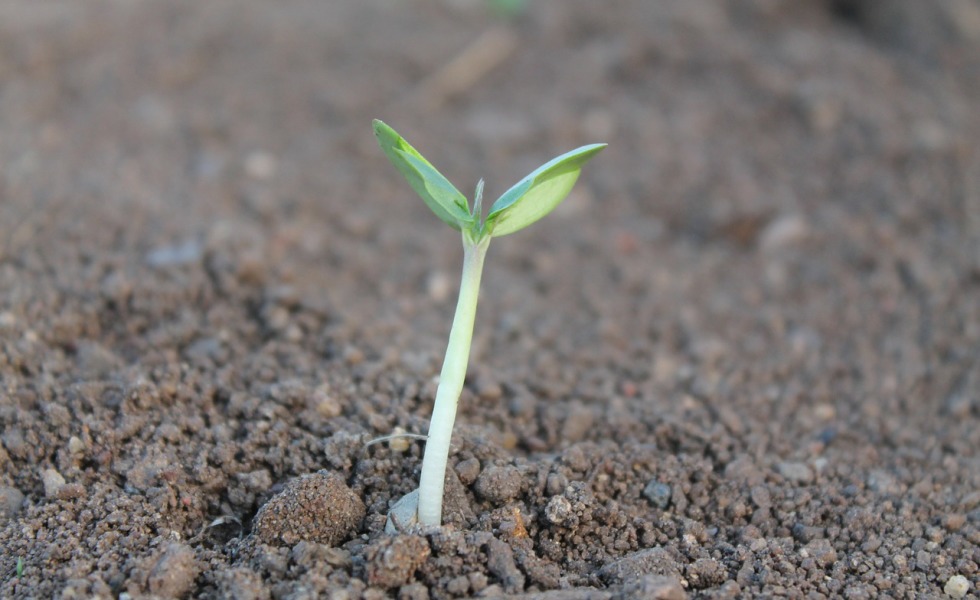‘Who do we blame for not farming the way we now know we should?’
Posted on March 25, 2021

The tree-lined streets of the University of Massachusetts (UMass) and hallowed hallways of Yale University are two places most farmers would not expect to find a hot debate over soil erosion.
And, yet, late this winter, staff at both campuses attacked agriculture’s ongoing failure to protect farmland. Don’t worry, no ivory tower was toppled. The standard Midwestern view of soil loss—that it’s a cost of production like seed or fertilizer—took a long-overdue hit, though.
The examination began in mid-February when Yale Environment 360, an online magazine published by the university’s School of Environment, highlighted a December UMass study that showed “more than a third of farmland in the U.S. Corn Belt”—or about 30 million acres—“has completely lost its carbon-rich topsoil due to erosion…”
To anyone needing to eat a generation from now, that’s stop-the-presses news.
And it was—but not in the corn-and-soybean Midwest. Instead, the soil loss numbers caught the attention of one-time Iowa farmboy, Verlyn Klinkenborg, a lecturer at Yale and, from 1997 to 2013, a member of the New York Times Editorial Board.
In a March 1 essay titled “How the Loss of Soil Is Sacrificing America’s Natural Heritage,” Klinkenborg politely chided the UMass geoscientists for narrowing the research’s shattering news on “catastrophic” topsoil loss into the mollifying language of ag economics: soil loss is about today’s dollars, not tomorrow’s lives.
“Inevitably, the paper goes on to calculate the economic implications of these findings,” he writes. “And that’s how the agricultural press (which has barely noticed this study so far) has read it: The loss of topsoil on 30 million acres may result in a possible $3 billion loss to ‘Midwestern farmers.’”
It’s what we do in agriculture, isn’t it: we put prices on priceless items like topsoil, clean water, and clean air so we can continue to abuse these “irreplaceable resources” until we’re forced to change.
Besides, $3 billion isn’t that much, right?
If we can do that to “an essential part of our common heritage,” topsoil, then it’s no surprise that “(t)he narrowness of these assumptions… has made it possible to farm in a way that is little more than slow strip-mining.”
In fact, today’s obsessive devotion to economics—money—has flipped an “old—and in big ag circles, forgotten—maxim that good farmers don’t really think about raising crops: they think about improving soil.”
It’s also led to industrial farming and “Industrial farming is like holding up the grocer at gunpoint for a head of lettuce—‘efficient’ in the short term, but eventually disastrous,” says Klinkenborg.
And disaster is where we now are in topsoil, explain UMass researchers. To measure today’s soil status, the researchers used high-definition satellite imagery, “soil spectral data,” and recent soil carbon indexing to measure how much “A-horizon” soil, topsoil, has been lost on intensely-farmed Midwestern land.
What they found, says Klinkenborg, was “shocking:” that “the A-horizon [soil] has been completely removed from 35 percent,” plus or minus 11 percent, “of the cultivated area of the Corn Belt.”
Plus or minus “11 percent is a large range of uncertainty,” he admits. “But its meaning is plain. At best, 24 percent of the topsoil in the Corn Belt has been completely removed by farming. At worst, 46 percent has been lost.”
Both numbers are terrible and both point to how “modern” farming must change to remain viable and, simultaneously, regenerative as climate change—not “efficiency”—impacts all farmers. The hopeful part is that we already know what we must do and we know how to do it.
First, however, we’ll waste precious time on the blame game.
“It’s easy to blame the old farmers,” writes Klinkenborg,”—the ones who broke the prairie and their immediate descendants—for not farming in a way that conforms to what we know now. But we ourselves aren’t farming the way we now know we should. Who do we blame for that?”
Who, indeed.
© 2021 ag comm
Share This